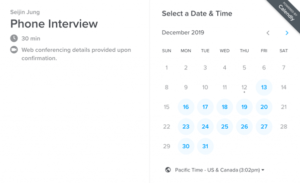Many tech companies these days are excited about product-led growth. And rightfully so. When a product-led growth (PLG) strategy is executed well, your product sells itself, leaving your teams with more time and resources to focus on the end user.
If you’re a user of any successful product-led growth product, chances are you didn’t hear about them through a cold call. You may not have even heard about the product before you started using it. Products in this category tend to grow through the power of word-of-mouth or social virality rather than via traditional marketing and sales channels. But that’s not the only thing they have in common.
According to Blake Bartlett of Openview Ventures, product-led growth companies share a few key characteristics:
Virality: Product-led growth companies grow by word-of-mouth or by encouraging sharing within the product. Think about the first time you invited someone into Slack to chat or booked a meeting via someone’s Calendly link If you hadn’t heard of Calendly before, you became a user through a product-led growth model.
Value before money: Many product-led growth companies offer a free trial for a limited period or freemium business model so users can receive value from the product before paying for it. Users are much more willing to pay for a product once they understand how they benefit from it and may be more inclined to tell their friends and colleagues about it as well.
Deliver value quickly: These companies deliver value to users quickly. Since most product-led growth companies rely on social sharing to grow their user base, this is even more important because it increases the chance that they will tell a friend and create a viral loop.
Frictionless sign-up: Product-led growth companies make it simple and hassle-free for you to sign up for their product. They tend to use methods such as single-sign-on or even simply asking for the bare minimum information before you can get your hands on the product and get value from it.
they understand how they benefit from it and may be more inclined to tell their friends and colleagues about it as well.
End-user focus: PLG companies take a bottom-up approach to growth. The customer is no longer the key stakeholder, but the end user. By focusing on the person with a problem that needs to be solved, product-led growth companies are able to spread much faster. Aren’t you more likely to tell everyone you know about that new product that solved your file-sharing woes than a product that increases ROI?
Calendly Case study

Along with companies such as SurveyMonkey and Slack, Calendly is a good example of a company that has adopted a product-led growth strategy. The API based meeting scheduling software was birthed to solve the day-to-day problem of time-consuming back and forth faffing just to schedule a meeting.
So, what has propelled Calendly to go viral during its almost decade-long existence? Calendly can’t exist with just one user. A single user can’t do anything on their own using the platform. But when they send their meeting link to someone else and the other person schedules a meeting, both parties receive value. The inherently collaborative nature of this product creates a “viral loop of value.”
Every time a Calendly user sends a meeting invitation link, they are both using and promoting the product. Let’s say ‘User A’ sends a meeting link to someone who has never heard of Calendly. The recipient (‘User B’) then clicks on the link and is immediately presented with Calendly branding. User B then uses the link to book a meeting with User A and sees how simple it. He starts using it, sending people his Calendly link. They start using it. And so on and so on.
Through this viral loop, Calendly can acquire new users without any additional effort. They may have acquired user A through traditional sales and marketing means, and let the product take it from there. That’s viral growth!
Written by Charlie Sell, Group Managing Director.
